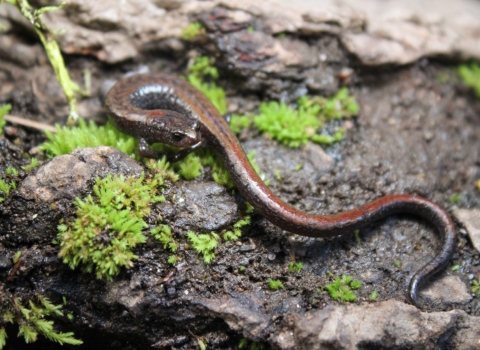The U.S. Fish and Wildlife Service announced today a proposal to remove the northeastern bulrush from the federal endangered species list. Thanks to efforts by Service staff and partners to recover this species, the perennial wetland plant is no longer in danger of extinction. The public is invited to comment on the delisting proposal for 60 days.
When the northeastern bulrush was listed as endangered in 1991, there were only 13 known populations in seven states. Today there are 148 known populations in eight states — New Hampshire, Vermont, New York, Pennsylvania, Virginia, West Virginia, Maryland, and Massachusetts — more than an 11-fold increase.
“Our important partnerships with state agencies, conservation organizations and academic researchers have helped us better understand and conserve northeastern bulrush through long-term population monitoring, habitat conservation, and increased surveys in prime habitat areas,” said Wendi Weber, U.S. Fish and Wildlife Service Northeast Regional Director.
Since the species was listed in 1991, state agencies and partners have conducted surveys for northeastern bulrush in every state in its known range, informed by the knowledge that this plant may not appear in the same spot every year. If environmental conditions are unfavorable, northeastern bulrush may be absent above ground for many years, re-emerging when conditions improve. Five states – Massachusetts, New Hampshire, Pennsylvania, Vermont, and West Virginia – have received federal endangered species grants to support surveys since 2010.
States have also undertaken targeted efforts to support recovery, including controlling invasive species invasive species
An invasive species is any plant or animal that has spread or been introduced into a new area where they are, or could, cause harm to the environment, economy, or human, animal, or plant health. Their unwelcome presence can destroy ecosystems and cost millions of dollars.
Learn more about invasive species that encroach on wetland habitats and protecting land. The Vermont Department of Fish and Wildlife has used two Recovery Land Acquisition Grants from the Service to purchase and conserve multiple properties for northeastern bulrush.
In 2012, the Western Pennsylvania Conservancy initiated a long-term project to monitor known populations, visiting some sites every year to document how plants responded to changing conditions.
Pennsylvania’s data-collection efforts helped advance understanding of the species’ population dynamics and needs, informing the proposal to delist and a post-delisting monitoring plan and protocol.
In 2014, the Wetland Trust and the Upper Susquehanna Coalition implemented a pilot program to propagate and transplant northeastern bulrush, successfully establishing a new population in New York state. Learn more about partner efforts to recover the northeastern bulrush.
The species has benefited from broad environmental protections. Since the 1970s, the provisions of the federal Clean Water Act and state wetland-protection laws have trickled down into the beaver marshes and ephemeral wetlands where the northeastern bulrush makes it home, reducing runoff, pollution, and encroachment from development.
In coordination with state partners, the Service will be developing a plan to monitor the species for no less than five years if it is delisted to detect any change in status that would indicate if the species needs additional conservation or should be relisted.
You can view the proposed rule in the Federal Register. The proposed rule will be available tomorrow in the Federal Register for public comment. We are accepting comments on the delisting proposal for 60 days, until September 30, 2024.
The ESA has been highly effective and credited with saving 99% of listed species from extinction. Thus far, more than 100 species of plants and animals have been delisted based on recovery or reclassified from endangered to threatened based on improved conservation status, and hundreds more species are stable or improving thanks to the collaborative actions of Tribes, federal agencies, state and local governments, conservation organizations and private citizens.


